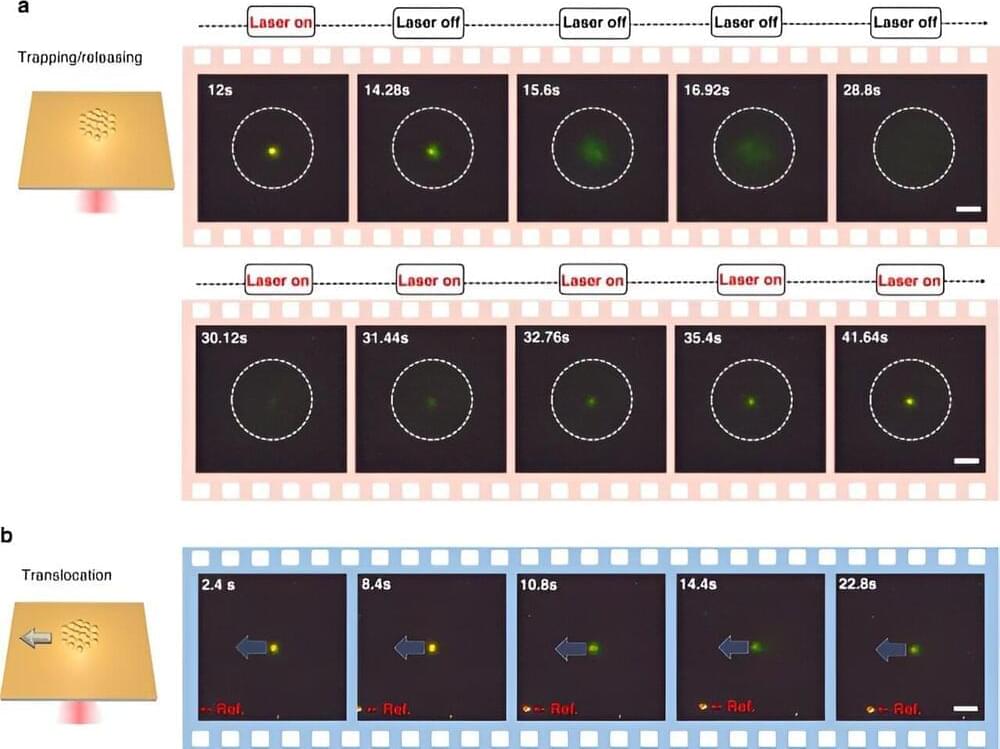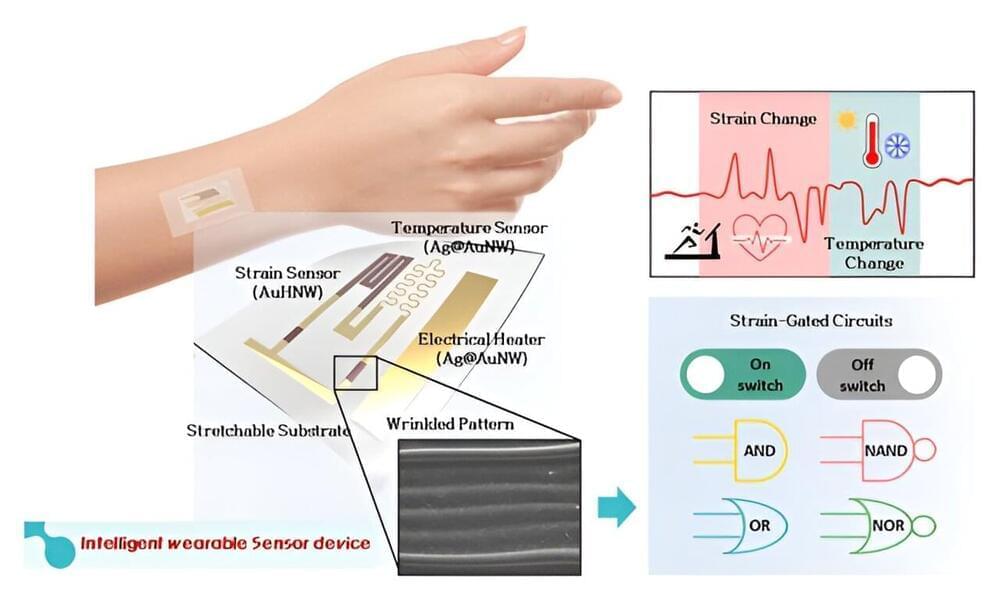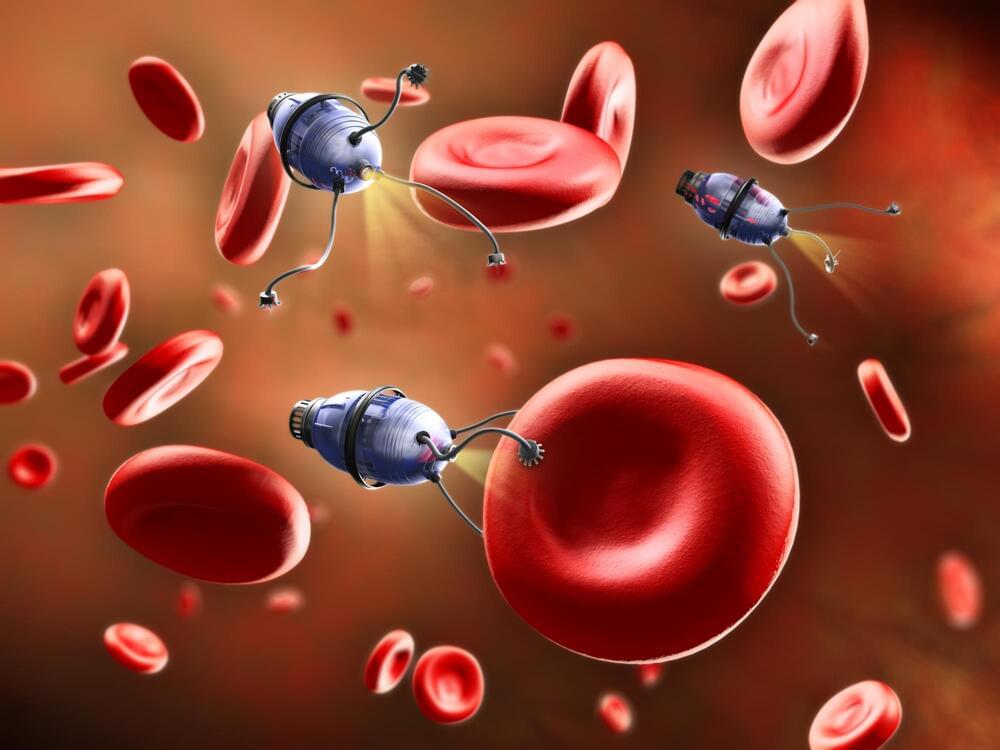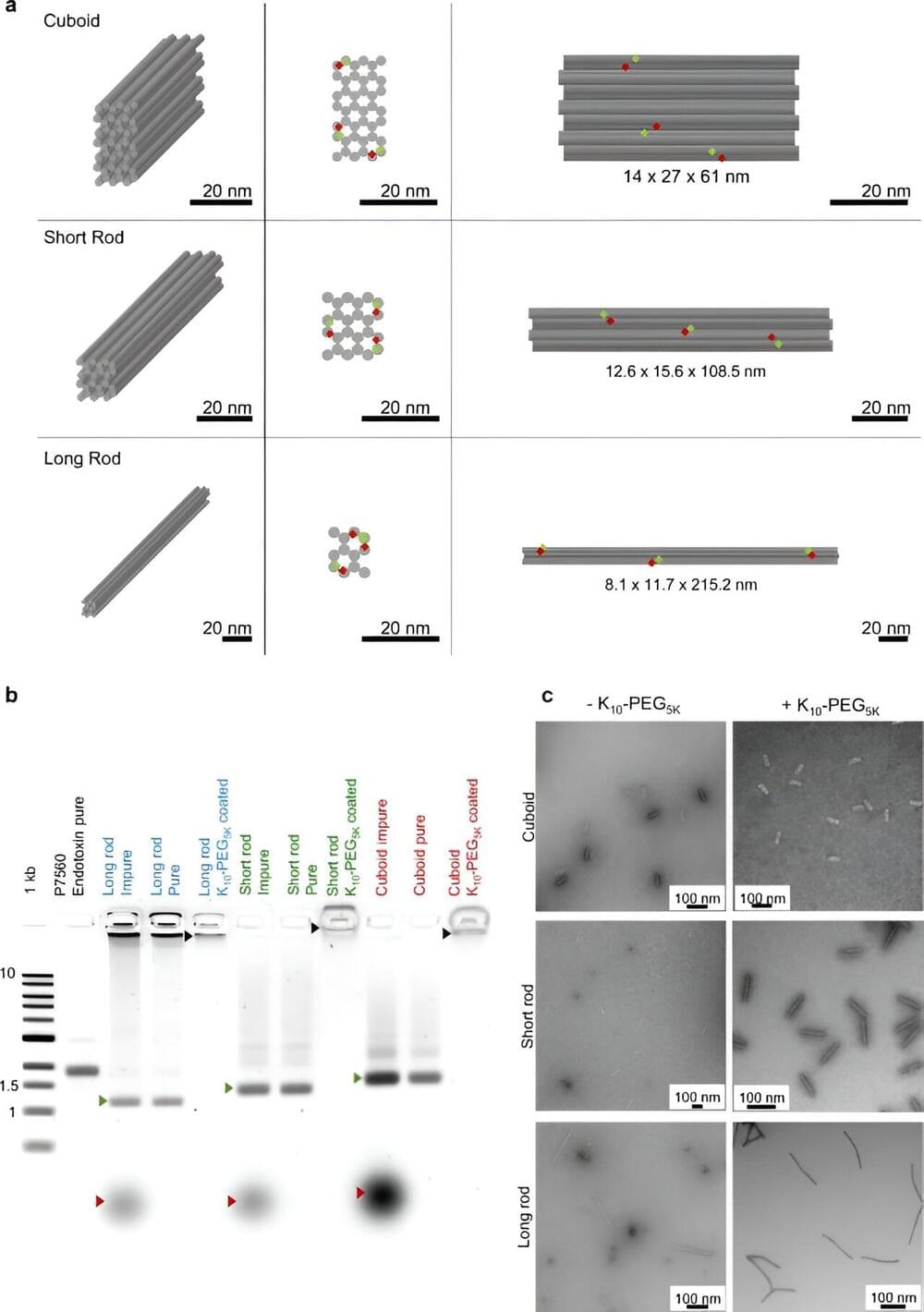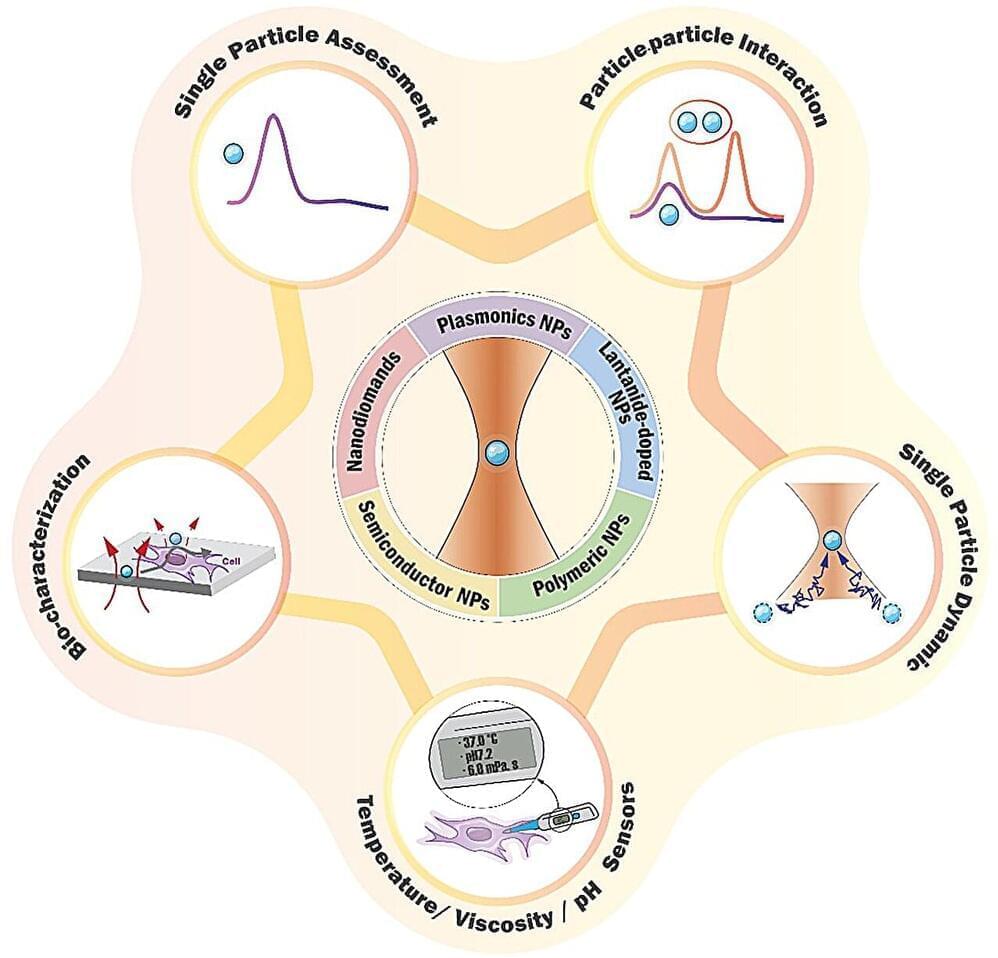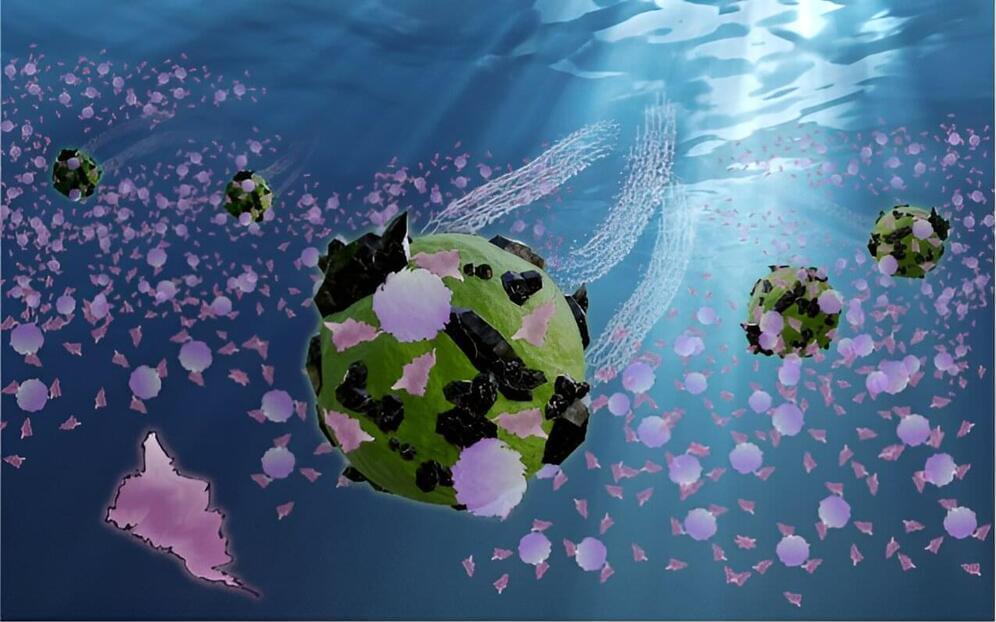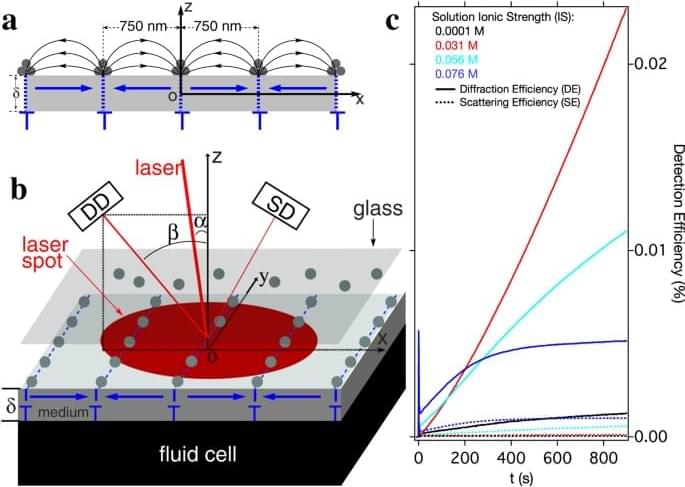As researchers, developers, policymakers and others grapple with navigating socially beneficial advanced technology transitions — especially those associated with artificial intelligence, DNA-based technologies, and quantum technologies — there are valuable lessons to be drawn from nanotechnology. These lessons underscore an urgent need to foster collaboration, engagement and partnerships across disciplines and sectors, together with bringing together people, communities, and organizations with diverse expertise, as they work together to realize the long-term benefits of transformative technologies.
Category: nanotechnology – Page 92
Optothermal nanotweezers are an innovative optical design method that has revolutionized classical optical techniques to capture a broad range of nanoparticles. While the optothermal temperature field can be employed for in situ regulation of nanoparticles, challenges remain in identifying their potential for regulating bionanoparticles.
To observe the synergistic effects of optothermal manipulation and Clustered Regularly Interspaced Short Palindromic Repeats (CRISPR)-based biodetection, the researchers developed a combination of CRISPR-powered optothermal nanotweezers abbreviated as CRONT.
In a new report in Light: Science & Applications, Jiajie Chen and a research team in optoelectronics engineering, biomedical engineering, and physics, accomplished this by harnessing diffusiophoresis and thermo-osmotic flows for optothermal excitation by successfully enriching DNA functionalized gold nanoparticles, CRISPR-associated proteins, and DNA strands.
A research team led by Professor Sei Kwang Hahn and Dr. Tae Yeon Kim from the Department of Materials Science and Engineering at Pohang University of Science and Technology (POSTECH) used gold nanowires to develop an integrated wearable sensor device that effectively measures and processes two bio-signals simultaneously. Their research findings were featured in Advanced Materials.
Wearable devices, available in various forms like attachments and patches, play a pivotal role in detecting physical, chemical, and electrophysiological signals for disease diagnosis and management. Recent strides in research focus on devising wearables capable of measuring multiple bio-signals concurrently.
However, a major challenge has been the disparate materials needed for each signal measurement, leading to interface damage, complex fabrication, and reduced device stability. Additionally, these varied signal analyses require further signal processing systems and algorithms.
Implants and tiny machines could eventually be working inside our bodies to help treat disease or monitor activity, but letting them communicate is tricky. Now scientists at EPFL have developed a system whereby devices can communicate by releasing molecules into a patient’s bloodstream.
Biomedical implants play a key role in healthcare, monitoring activity in organs like the heart or brain, while recent research is investigating how nanoscale robots might one day swim or crawl through the body to fight disease. But these systems have a communication issue.
Running wires through the body is not only impractical, it’s an infection risk. And wireless technologies like radio, light and Bluetooth don’t travel through human tissue very efficiently, drastically limiting their range.
The capacity to regulate the biodistribution of therapeutics is a highly desired feature that can limit the side effects of many drugs. In a new study in Scientific Reports, Noah Joseph, and a team of biotechnology and nanoscience scientists in Israel, describe a nanoscale agent developed from a coupled polymer-DNA origami hybrid capable of exhibiting stability in serum and slow diffusion through tissues.
By coupling to fragments of polyethylene glycol through polyamine electrostatic interactions, the team noted marked stability of the agents in vivo, where more than 90% of the constituents maintained structural integrity for five days after subcutaneous injection.
The findings highlight the polymer-DNA hybrid nanostructures as viable pharmacological agents that can enter mainstream technologies, including their use as monoclonal antibodies for drug activity.
A new article published in Opto-Electronic Science reviews the fundamentals and applications of optically trapped optical nanoparticles. Optical nanoparticles are one of the key elements of photonics. They not only allow optical imaging of a plethora of systems (from cells to microelectronics), but also behave as highly sensitive remote sensors.
The success of optical tweezers in isolating and manipulating individual optical nanoparticles has been recently demonstrated. This has opened the door to high-resolution, single-particle scanning and sensing.
The most relevant results in the quickly growing fields of optical trapping of individual optical nanoparticles are summarized by this article. According to different materials and their optical properties, the optical nanoparticles are classified into five families: plasmonic nanoparticles, lanthanide-doped nanoparticles, polymeric nanoparticles, semiconductor nanoparticles, and nanodiamonds. For each case, the main advances and applications have been described.
Seas, oceans, rivers, and other bodies of water on Earth have become increasingly polluted over the past decades, and this is threatening the survival of many aquatic species. This pollution takes a wide range of forms, including the proliferation of so-called micro and nano plastics.
As suggested by their name, micro and nano plastics are harmful tiny particles derived from the disintegration of plastic waste released into the water. These particles have been found to disrupt aquatic ecosystems, for instance, delaying the growth of organisms, reducing their food intake, and damaging fish habitats.
Devising effective technologies to effectively remove these tiny particles is of utmost importance, as it could help to protect endangered species and their natural environments. These technologies should be carefully designed to prevent further pollution and destruction; thus, they should be based on environmentally friendly materials.
One of ray kurzweils wonder machines are already here self assembled nanobots called foglet machines. This could allow for future avatars that people could pilot for daily life.
Colloidal magnetic nanoparticles are candidates for application in biology, medicine and nanomanufac-turing. Understanding how these particles interact collectively in fluids, especially how they assemble and aggregate under external magnetic fields, is critical for high quality, safe, and reliable deployment of these particles. Here, by applying magnetic forces that vary strongly over the same length scale as the colloidal stabilizing force and then varying this colloidal repulsion, we can trigger self-assembly of these nanoparticles into parallel line patterns on the surface of a disk drive medium. Localized within nanometers of the medium surface, this effect is strongly dependent on the ionic properties of the colloidal fluid but at a level too small to cause bulk colloidal aggregation.
The world’s coastlines harbor a largely untapped energy source: the salinity difference between seawater and freshwater. A new nanodevice can harness this difference to generate power.
A team of researchers at the University of Illinois Urbana-Champaign has reported a design for a nanofluidic device capable of converting ionic flow into usable electric power in the journal Nano Energy. The team believes that their device could be used to extract power from the natural ionic flows at seawater-freshwater boundaries.
University of Missouri researchers’ conceptual design of a nanomaterial could potentially pave the way for new uses of nanotechnology in medicine and science.
In a recent study, scientists at the University of Missouri developed a proof of concept for a nanocapsule — a microscopic container — capable of delivering a specific “payload” to a targeted location.
While beyond the scope of this study, the discovery has the potential to revolutionize the delivery of drugs, nutrients, and other chemicals in humans and plants. The power of the forward-thinking idea for this tiny delivery mechanism comes from its inventive structure, said Gary Baker, an associate professor in the Department of Chemistry and study co-author.

